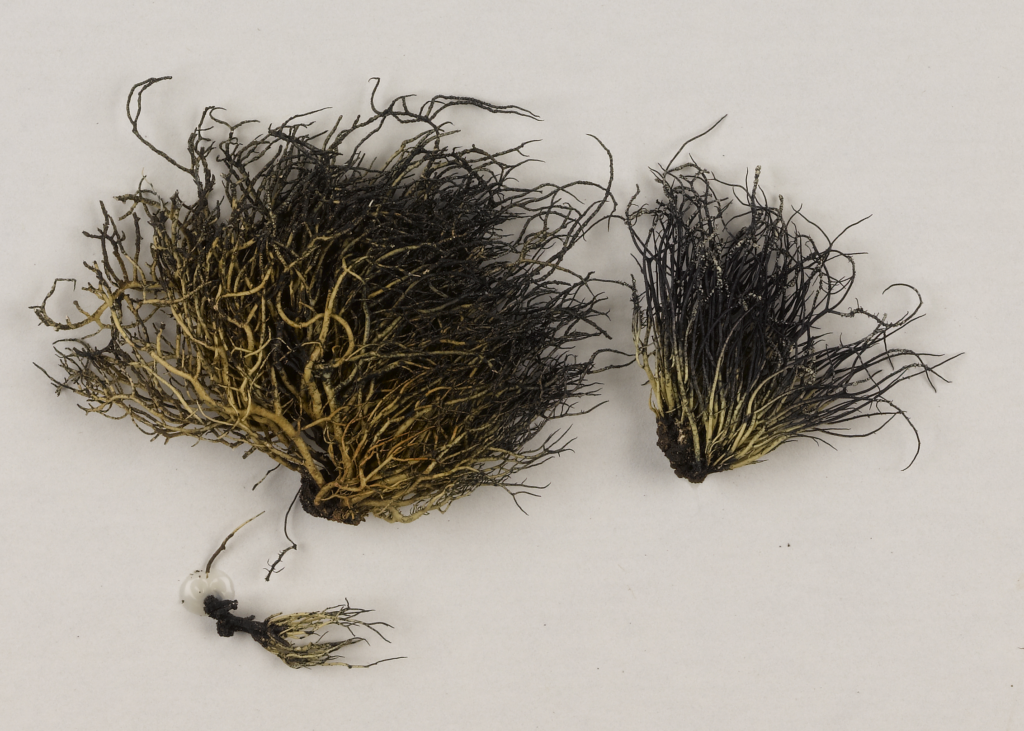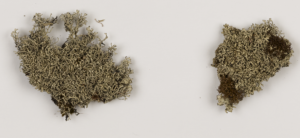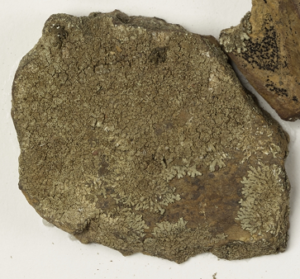While Lichens are mostly made up of fungal tissue, they are a symbiosis that also includes algae and/or cyanobacteria that do the photosynthesis. Together these live in some of the toughest places on earth. Read more here.
Below are two lichens listed for protection under the Victoria Flora and Fauna Guarantee Act (FFG Act 1988):
- Black-beard Lichen – Usnea acromelana
- Underdark Shield – Xanthoparmelia suberadicata
The following lichen is on the Advisory List of Rare or Threatened Plants in Victoria – 2014:
- Victoria’s Shield – Xanthoparmelia victoriana
Despite this there are no new records nor collections in the last two decades for Victoria.
Look-alikes: Lichens often need to be collected to be properly identified, as chemical tests and microscopic characters may need to be considered. There are many other Shield and Beard lichen species.
Black-beard Lichen – Usnea acromelana

Black-beard Lichen (see MAP) has been recorded from basalt and dolerite rocks:
- More common in Tasmania with 176 collections, with the most recent being 2012
- also more common in New Zealand with 119 collections, with the most recent in 2016
- and in Victoria three collections, with the last recorded near Falls Creek in 1977
Underdark Shield – Xanthoparmelia suberadicata

Underdark Shield (see MAP) has been recorded on rocks, including granite outcrops:
- most commonly in Tasmania with 5 collections, the most recent in 2003
- in Victoria in the Baw Baw and Macedon Ranges Shires, and was last recorded in 1998
- in New Zealand twice, most recently in 1991
- and just once in New South Wales in 1988
Victoria’s Shield – Xanthoparmelia victoriana

Victoria’s Shield (see MAP) is found on rocks and last recorded in 1984 in the Greater Bendigo area.
- found twice in Western Australia in 1997 and 2007
- found once in in Victoria in 1984 near Bendigo


